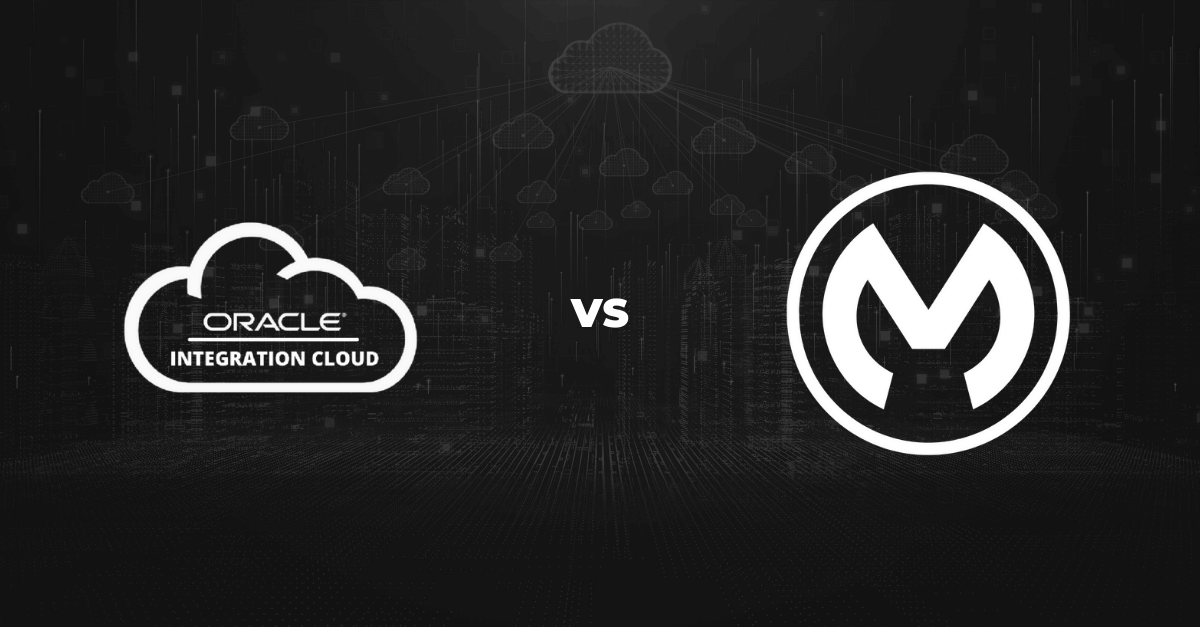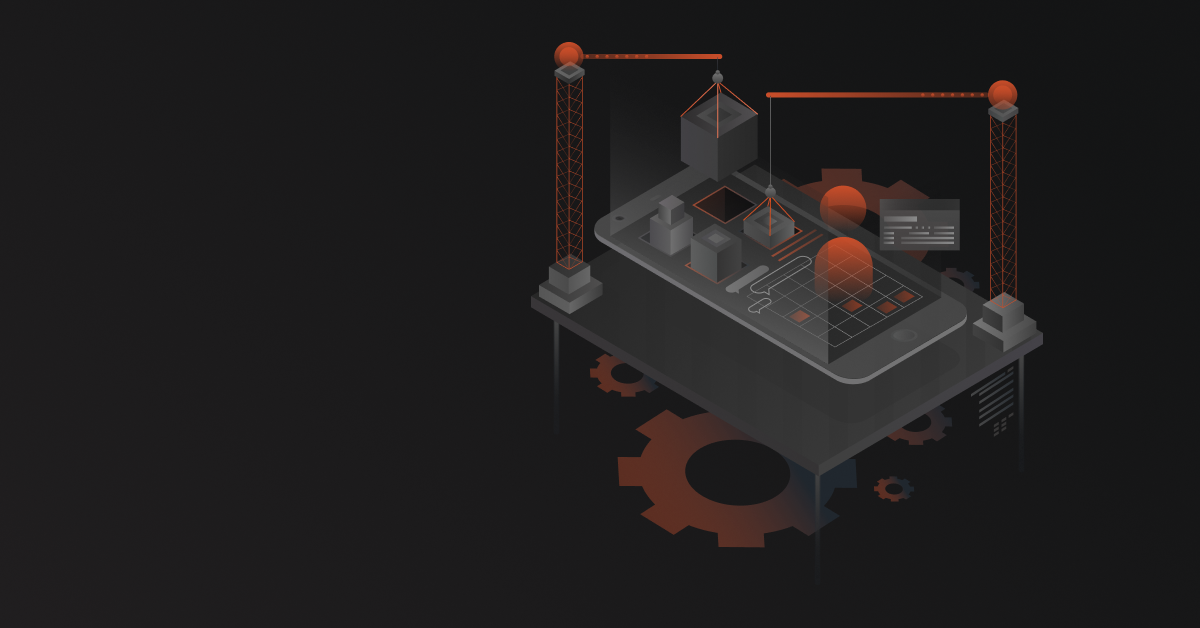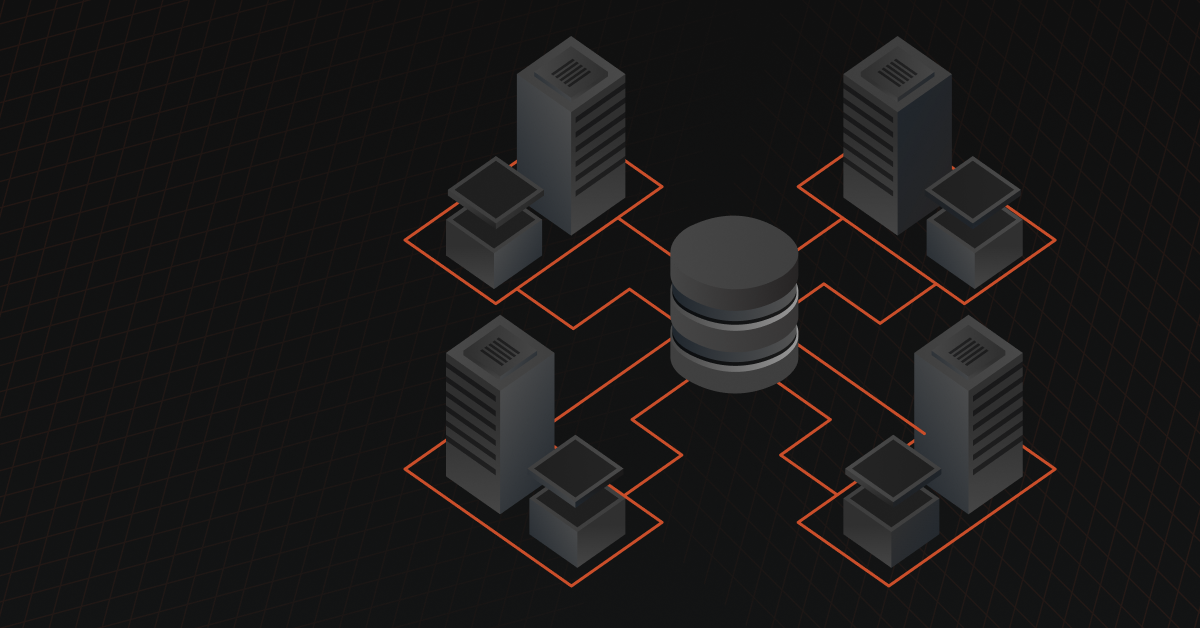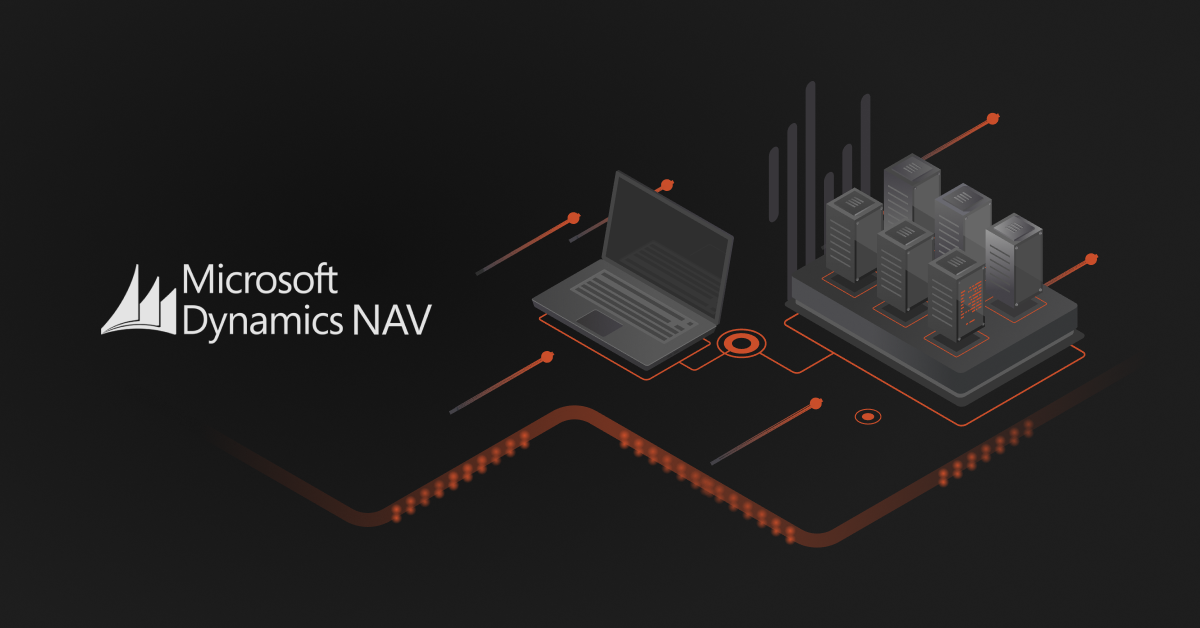Oracle Integration Cloud (OIC) and MuleSoft are today’s most prominent and powerful integration systems. They both offer distinct advantages over each other. To help businesses make informed decisions about their integration needs, this article will give a detailed comparison of Oracle Integration Cloud vs MuleSoft.
Oracle Integration Cloud works best within Oracle ecosystems, being an Oracle-centric solution. MuleSoft offers excellent integration flexibility and connects to varying systems, though can be expensive for non-enterprise businesses. DCKAP Integrator is the best alternative for distributors looking for an powerful cloud integration tool that works with their preferred products, without burning a hole in their budget.
Overview of Oracle Integration Cloud (OIC) vs MuleSoft
| Aspects | Oracle Integration Cloud (OIC) | MuleSoft’s Anypoint Platform |
| Ease of Use and Integration | The user-friendly interface makes it easy to integrate with many systems. | Features extensive tooling and solid service-oriented architecture |
| iPaaS Solution | Streamlines cross-national real-time integration, particularly in Oracle-centric settings | Performs admirably in situations with a wide variety of cloud vendors and complicated integration needs |
| Lower Costs in Oracle Environments | Cost-effective within the Oracle ecosystem | Greater upfront expenses, yet adaptable in evading vendor lock-in |
| Vendor Integration Versatility | Seamlessly integrates with diverse cloud vendors without limitations | Provides leeway but could result in vendor lock-in |
| Tool Variety | Competent automation solutions, but lacking in flexibility when contrasted with MuleSoft | A whole set of tools that can be customized |
| Custom Integration Flexibility | Customized integrations with limited flexibility | Very versatile for complex integration requirements |
| API Management | Strong API administration features; however, MuleSoft offers more advanced options. | Top-tier API management and API-driven connectivity |
| Integration with Emerging Technologies | Flexible in response to new technology, however, not quite as flexible as MuleSoft | Integrates with contemporary technologies with ease and flexibility. |
| Platform Costs | Streamlined setup expenses for Oracle-centric systems | For smaller businesses, higher upfront expenditures could be a problem. |
| Risk of Vendor Lock | The Oracle ecosystem has less vendor lock-in potential. | Concerns about vendor lock-in could arise from the extensive use of platforms. |
| Scalability and Performance | Concerns about scalability in the face of exceptionally large transaction volumes | Built to scale, efficiently processes large amounts of data and transactions |
| Community and Support | Consistent backup and documentation, expanding network | Thriving community that offers a wealth of resources, including templates and APIs. |
| Cloud Strategy | With an emphasis on the integration of Oracle’s ecosystem | Built to be more versatile and compatible with different cloud providers |
Oracle Integration Cloud (OIC)
One of the most well-known names in integration, Oracle Integration Cloud Service provides a full array of services designed specifically for businesses that use Oracle products. Enterprises can make an informed decision when coordinating their integration strategy, thanks to its ability to support API-led connectivity across multiple platforms.
By offering IT teams and clients a low-code implementation option, OIC’s capabilities greatly shorten development time through its variety of pre-built connectors. The cloud’s built-in security features also protect sensitive data in it.
Pros:
- Ease of Use and Integration with Various Applications: Oracle Integration Cloud’s intuitive user interface makes application integration with a wide variety of new and existing systems and legacy systems very simple.
- Robust iPaaS Solution: Oracle Integration Cloud, an iPaaS platform, makes integration simpler and provides a complete solution for business processes in real-time across countries.
- Lower Costs for Oracle-Centric Environments: OIC offers a cost-effective solution for enterprises that rely on Oracle products, thanks to its seamless integration within the Oracle ecosystem.
- Versatility in Cloud Vendor Integration: Providing an example of how OIC facilitates seamless integration across different cloud vendors, allowing for a preferred integration platform without limiting cloud capabilities or resulting in vendor lock.
Cons:
- Limited Tool Variety: Although OIC has respectable automation tools, MuleSoft’s Anypoint Platform offers a more comprehensive set of options and more room for customization.
- Potential Complexity in Custom Integration Requirements: When it comes to highly customized integration requirements, OIC may not be as flexible as MuleSoft.
Related Read: Top 18 ERP Integration Tools & Platforms (Reviewed)
MuleSoft
MuleSoft’s Anypoint Platform, on the other hand, is an advocate for flexibility and excels at meeting the changing needs of numerous cloud vendors. Beyond the sphere of enterprises, it enables a varied range of integration requirements across many systems with its powerful API Manager and API reusability features.
Organizations of every size may leverage MuleSoft’s powerful features for digital transformation thanks to its dedication to customer support and extensive training inquiries. The higher licensing fees associated with this pricing scheme, however, could pose a challenge for smaller organisations.
Pros:
- Comprehensive Toolset and Service-Oriented Architecture: MuleSoft’s Anypoint Platform has a broad range of tools and a strong service-oriented architecture, allowing for smooth integration with a variety of systems and cloud vendors.
- Flexibility and Wide Range of Automation Tools: Anypoint Platform’s various automation tools are very adaptive to various integration scenarios, allowing it to thrive in complex integration requirements.
- API-Led Connectivity and Strong API Management: Robust API management capabilities, API-led connectivity, and support for a wide range of business processes and cloud integration strategies are all features that set it apart as an industry-leading API-led integration platform.
- Integration with Emerging Technologies: As examples of its cutting-edge approach, we can talk about its flexibility and adaptability when integrated with new technologies like Whatsapp, IoT devices, or AI-driven applications.
Cons:
- Higher Cost of Platform: Compared to OIC, MuleSoft’s Anypoint Platform may have a greater cost, which could be difficult for smaller organizations or those with short-term needs.
- Possibility of Vendor Lock: The widespread use of MuleSoft as an integration platform raises the possibility of vendor lock, which organizations should be wary of.
Also read: MuleSoft vs Zapier Explained [+ Top iPaaS for Distributors]
Comparative Analysis
1. Connectivity and Adapters
Known as Integration Adapters, Oracle Integration Cloud (OIC) provides a wealth of pre-built connectors that span numerous databases, applications, and technologies. By offering pre-built connectors for widely used systems, such as Salesforce, SAP, and others, its adapter library streamlines the integration process. For integration purposes, OIC also supports protocols such as REST and SOAP.
For easy connection with a wide variety of apps, systems, and APIs, MuleSoft offers a wide variety of connectors called Anypoint Connectors. Anypoint Exchange, developed by MuleSoft, is a place where integration projects may share and find reusable connectors, templates, and APIs.
2. Integration Approach
OIC uses a low-code, visual method for integration. Its user-friendly interface has a drag-and-drop builder that lets users create processes and integrations.
Even though more complicated scripting and customization are still possible, this method speeds up development, which is great for people who don’t have a lot of technical experience.
When it comes to integration, MuleSoft is flexible enough to accommodate both visual and code-centric methods. Using Anypoint Studio’s graphical user interface, developers can build integrations; for more advanced customization, they can also use configurations based on Java or XML.
This adaptability meets the needs of developers with diverse preferences and levels of expertise.
3. Scalability and Performance
OIC‘s cloud-native design makes it reliable and scalable. You can rest assured that Oracle’s infrastructure is highly available and can easily scale to handle different types of workloads.
Unfortunately, there have been reports of certain users experiencing issues with scalability when dealing with exceptionally high transaction volumes.
MuleSoft‘s architecture is built to be highly performant and scalable. Organizations can efficiently scale horizontally to meet increased demands with the help of Mule runtimes, which can be deployed either on-premises or in the cloud.
The platform is well-suited to manage massive amounts of data and transactions because of its focus on performance.
4. Community and Ecosystem
Oracle is actively supporting the growth of the OIC community and ecosystem. Documentation, forums, and support channels are all available to users, allowing them to collaborate and get help from Oracle’s vast network.
Through its Anypoint Exchange, MuleSoft boasts a lively and engaged community. A plethora of community-shared resources, such as connectors, templates, and APIs, are available to developers.
With its extensive documentation and support, MuleSoft fosters a vibrant community of users and contributors.
5. Vendor Relationships
Oracle Integration Cloud benefits from good vendor ties. Oracle’s industry presence and existing ties help Oracle Integration Cloud. A smooth transition and improved alignment may be possible for enterprises with deep integration with Oracle products.
By remaining vendor-agnostic, MuleSoft’s Anypoint Platform facilitates connections with a wide range of cloud service providers. Because of this, it is the best fit for businesses that work with multiple cloud vendors and are looking for a platform that is not tied to any one provider.
6. Cloud Strategy
Oracle Centric Cloud Strategy focuses on integration inside the Oracle ecosystem, making it a good choice for businesses that have a significant investment in Oracle’s technology stack and are seeking a more coherent environment.
MuleSoft‘s platform is designed to work with diverse suppliers’ systems and cloud capabilities, allowing for greater flexibility and adaptability when integrating across different cloud environments.
7. Total Cost of Ownership (TCO):
OIC might initially be a lower cost alternative for enterprises that rely heavily on Oracle products, but long-term costs could change depending on growth and usage.
A higher up-front expense that could pay off in the end: Anypoint Platform may have a greater initial cost but may present a challenge in the long run because of its versatility, which eliminates potential vendor lock and integration issues.
DCKAP Integrator: The Top Alternative for Distributors
In a market where MuleSoft’s Anypoint Platform reigns supreme, DCKAP Integrator offers a complete integration solution that works in tandem with the tools and applications preferred by distributors. DCKAP Integrator assists wholesale businesses looking for a reliable cloud-based integration platform enhanced with a variety of automation tools.
DCKAP Integrator is the go-to integration platform for distributors because of its flexibility and transparent pricing model which helps level the playing field for distribution business of varying sizes. Its API-led connectivity platform promotes process automation and robotic process automation across various SaaS systems, reflecting the industry’s trend towards simpler, low-code integration strategies.
Final Word
Strong integration solutions are available from both Oracle Integration Cloud and MuleSoft, meeting the demands of various enterprises. Integration demands, preferred development methodologies, scalability needs, and existing ecosystem knowledge are significant considerations when deciding between the two.
Oracle Integration Cloud (OIC) is the way to go if:
- If you want to build integrations quickly, you need an interface that’s easy on the eyes.
- Oracle applications are the backbone of your business, and OIC’s integration adapters address some of your unique needs.
With MuleSoft, you can:
- When building integrations, you need to be able to switch between visual and code-centric techniques with ease.
- To meet your integration demands, scalability and performance under heavy transaction loads are of the utmost importance.
- An established ecosystem with a variety of resources given by the community is more to your liking.
With DCKAP Integrator, distributors prosper with:
- A robust, economical integration platform built for distributors
- An easy to use interface backed by features like an upgraded workflows builder, advanced mapping and modifiers
- Assured data security across all integrated tools
The future of integration depends on enterprises making the right choice by selecting the appropriate platform, one that not only handles the problems of the present but also fits with their long-term integration goals and challenges in a quickly changing world.
Contents




